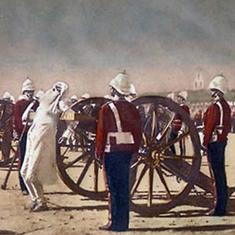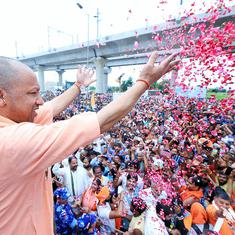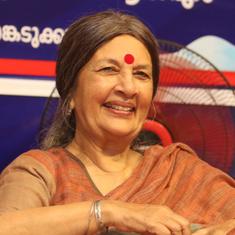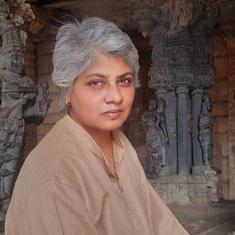With the country’s sprawling geography and a growing population, India’s healthcare system is a story of many contrasts. Rural India, home to 65 per cent of the country’s population, faces an 80 per cent shortfall in specialist doctors. As a result, patients often have to travel significant distances to access good healthcare at hospitals such as All India Institute of Medical Sciences (AIIMS), New Delhi, which receives 15,000 patients daily in its outpatient department, many of whom come from far-flung areas. Travelling long distances to avail healthcare is stressful and expensive – and understandably something that most patients choose as a last resort. By then, the disease is often at an advanced stage, which reduces the chances of recovery. On the other hand, the country’s biggest and most populous cities often have access to state-of-the-art healthcare facilities and enough specialist doctors.
The Covid-19 pandemic, which led to widespread suffering and death across the country, shone a 1000-watt flashlight on these gaps. Especially during the second wave (April–May 2021), when a surge in Covid cases almost threatened to collapse our entire healthcare system, even in our biggest cities and best hospitals. At the same time, it forced innovations in our healthcare system, leading to the adoption of tele-health and digital health technologies such as the CoWIN platform for vaccination management and Aarogya Setu for contact tracing. The Ayushman Bharat Digital Mission (ABDM), which followed soon after, aimed to create a digital ecosystem for storing personal health records of citizens, registries for healthcare professionals and facilities so that patients could make informed choices. It also acts as a platform for scheduling appointments and teleconsultations.
These are all steps in the right direction, but limited Internet connectivity and digital infrastructure, particularly in rural areas, have checked the scope of these initiatives. As has in many cases, low levels of literacy, especially digital literacy. More importantly, these policies do not help solve the primary issue of limited healthcare capacity and disease detection capabilities, which leads to inequities in healthcare access in India. And this is where AI can be impactful – especially for early detection of critical diseases and targeted public health interventions in our currently resource-poor healthcare system.
Despite making significant leaps in healthcare, India continues to have one of the lowest life-expectancy rates in Asia – even though it is the region’s third-largest economy. One of the contributing factors is infant mortality, where we again lag behind much of the region. Infant mortality, or the number of infants who die before reaching the age of one per 1000 live births every year, was 25.5 in 2022. This is lower than some of our neighbours such as Pakistan (57) and Myanmar (35), but higher than Sri Lanka (6), Bangladesh (24), Nepal (24) and Bhutan (23). Looking beyond our immediate neighbours, within the BRICS bloc, only South Africa (26) fared worse. The simple reason why so many babies die in India is because of poor availability of primary healthcare in rural and far-flung areas. Government programmes aimed at improving maternal and infant care are in place, but logistical and resource constraints often make it difficult to ensure proper last-mile delivery. This is a challenge that technology, particularly AI, could help address.
Let’s take the example of India’s frontline healthcare workers, our 2 million-strong, largely female, ASHA and Anganwadi workers, who reach corners of the country where doctors don’t. A common challenge they face when making home visits to new mothers is understanding if the newborn is developing properly. This is especially crucial in the first thirty days of birth for the baby’s survival. But there is only so far that assessment by the naked eye can go, especially by frontline workers who don’t have much medical training. Shishu Maapan, a child anthropometry tool developed by the non-profit organisation Wadhwani AI, hopes to solve this problem. The healthcare worker has to take a short video of a newborn on any smartphone and the AI model can predict weight, length and head circumference to assess if the infant is developing properly or not. This nifty application can ensure targeted interventions in resource-poor settings in rural India.
The perils of unequal health access extend well beyond infancy. Take tuberculosis (TB), for example, a bacterial infection that primarily affects the lungs but can also impact the spine, brain or kidneys, and kills an estimated 3,20,000 people in India every year. Although preventable and curable, this infectious disease is one of the leading causes of death in the world. India shoulders a big share of this burden, accounting for 26 per cent of all TB cases globally. Reducing the incidence of this disease will clearly go a long way in boosting the country’s average life expectancy.
Incidents of TB lurk all around us, even though we may not realise it, with the country’s rural areas as well as urban slums being major hotspots. Poverty is a key driver, with TB instances reducing in communities where income has gone up, and housing, sanitation and nourishment have consequently improved. Understandably, then there is quite a bit of social stigma around the disease, with many avoiding treatment for fear of social isolation, gossip, verbal abuse, failed marriage prospects and neglect from family. There is also a widespread misconception that TB is a hereditary disease, which further adds to the stigma and the social isolation of not just the individual but also their family.
It was back in 2018 that India announced the ambitious plan to eliminate TB by 2025, five years ahead of the United Nations Sustainable Development Goals target of 2030. These targets are unlikely to be met – while in part this is because the Covid pandemic shifted focus and resources away from TB,20 the key reason is delayed diagnosis of patients. “We now have the resources to deal with the disease, but we just cannot find the infected people on time,” explains Jigar Doshi, who is director of machine learning at ARTPARK, a Bengaluru-based non-profit, and has worked on building AI solutions for tackling TB.
While we may be behind on our targets, it doesn’t mean the war on TB has to be lost. One of the key ways in which AI can aid in this fight is early detection. “Many of the patients visiting primary healthcare centres across the country with coughs lasting more than three weeks have TB, but they often go undiagnosed,” explains Dr RK Prasad, a family physician we spoke with. As director of the Academy of Family Physicians of India, a doctor’s body, he has plenty of experience in caring for patients in rural India: “Even if the doctor suspects that a patient has TB, it can be challenging to get them to take a test and get a confirmation. The most common way to detect TB is to do a sputum test, but that involves the patient finding a cup to collect the phlegm sample in and looking for a testing centre, which could be up to 50 km away. The sample is then sent to a central lab, possibly 100 km away,” he adds. All of this can not only delay the diagnosis, but deter patients from seeking treatment in the first place, as they may in the process lose out on several hours’ work and consequently, wages. This, Dr Prasad explains, is one of the primary challenges in timely detection of TB patients, even if they are willing to get treatment.
But what if we could detect TB by just listening to the patient’s cough?
This is where AI can help. Organisations, ranging from non-profits like Wadhwani AI to tech giants like Google, are trialling solutions that will allow an ASHA worker to open an app on their mobile and record a person coughing. An AI model trained on sizable datasets of cough sounds can then detect whether the person has TB or not. This initial screening allows the ASHA worker to more accurately identify, track and assist people who might have otherwise been missed. Many of these applications are already being trialled by workers in some states around the country.
Now, given the social stigma surrounding TB and the economic condition of many of the patients, even if identified early on, many do not follow through the course of their treatment for various reasons. If a patient does not follow through with the prescribed medicines correctly, there is a risk of developing drug resistance. This is an increasing concern in India and poses a fresh obstacle for our plan to eliminate TB. Patients who do not follow up and fail to overcome the disease are also at risk of spreading the disease further to those coming in contact with them.
Identifying such patients is a key part of the fight against TB. To do this, some states are trialling AI applications that analyse patients’ medical records from the government’s TB database, Ni-kshay, along with their demographic information, to try and predict who is at high risk of abandoning treatment. Given the resource constraints in our healthcare system, such a shortlist could be used by district TB officers to plan follow-up checks on these patients.
AI, therefore, can play a crucial role in improving lifespans in our country by aiding early detection and accurate tracking of health issues in both infants and adults, especially those in rural or lower-economic settings. And the scope of use cases will continue to evolve as we identify more areas of intervention. For example, in radiology, where AI models trained on images and data can study a chest scan to say whether the patient has TB or not.

Excerpted with permission from Enter Prompt: Navigating AI in the World’s Largest Democracy, Barsali Bhattacharyya and Sidharth Sreekumar, Penguin Random House India.










